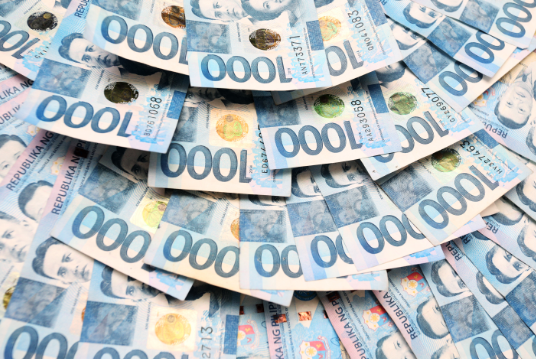MANILA, Philippines—The global economic fallout from Russia’s invasion of Ukraine would not only jack up inflation in the Philippines but also weaken the peso as a result of more expensive imports despite a rosier outlook for the domestic economy, think tank Moody’s Analytics said.
In a report on Monday (March 28), Moody’s Analytics chief Asia-Pacific economist Steven Cochrane said its updated 2022 gross domestic product (GDP) growth forecast of 6.4 percent for the Philippines was “slightly stronger than the February forecast, although this is due to stronger-than-anticipated growth in the fourth quarter of 2021 that now launches the 2022 forecast from a higher level.” While higher than the previous 6.2-percent GDP growth estimate, Moody’s Analytics’ latest projection remained below the government’s 7 to 9 percent target.
In another report on Monday, Moody’s Analytics said the shift of many parts of the country to the lowest alert level 1 pandemic restrictions “bodes well for domestic demand.”
At the same time, Moody’s Analytics slightly raised its headline inflation forecast for this year to 4.2 percent from 4.1 percent previously, still above the Bangko Sentral ng Pilipinas’ (BSP) 2 to 4 percent target range of manageable price hikes.
“Global energy prices have skyrocketed amid the Russian-Ukrainian military conflict. The Philippines ranks among the countries in Asia-Pacific most dependent on refined petroleum for energy generation and production, so elevated prices will spill over to producer and consumer prices,” Moody’s Analytics said.
“With oil prices holding above $100 per barrel, inflation may breach the upper limit” of the BSP’s target, it added, citing that the central bank already hiked its own 2022 inflation forecast to an above-target 4.3 percent from 3.7 percent previously.
“Housing, utilities and transport have already seen the biggest price jumps in year-on-year terms. Supply chain disruptions will further aggravate food shortages, pushing food prices higher” in the Philippines, the think tank said.
On top of elevated consumer prices, Moody’s Analytics said “the widening current account deficit resulting from stronger import demand is another concern because it adds to peso devaluation pressure.” More expensive imports bloat the bill and the goods trade deficit, as well as the current account gap as more US dollars were being spent to cover importation.
Moody’s Analytics nonetheless said it would help that “a closer look at the central bank’s foreign reserves reveals that it has an adequate buffer to cover almost 11 months of short-term liabilities,” including import payments.
Amid the US Federal Reserve’s expected string of interest rate hikes, Moody’s Analytics said “Asia-Pacific central banks may have little choice but to commence tightening policy if they have not done so already, particularly in India, Thailand, Australia and the Philippines, where inflation is elevated.”
While the BSP had signaled it won’t be in lockstep with the Fed’s normalization as it will prioritize supporting economic rebound despite rising inflation risks, Moody’s Analytics said it “maintains the view that the central bank will keep the policy rate accommodative through the first half of the year until the recovery is firmly underway and there are sustained periods of growth.” The BSP last week kept the policy rate at a record-low 2 percent.
“However, if elevated prices become broad-based, the central bank will be pressured to act promptly to curb inflation pressure,” Moody’s Analytics said.
